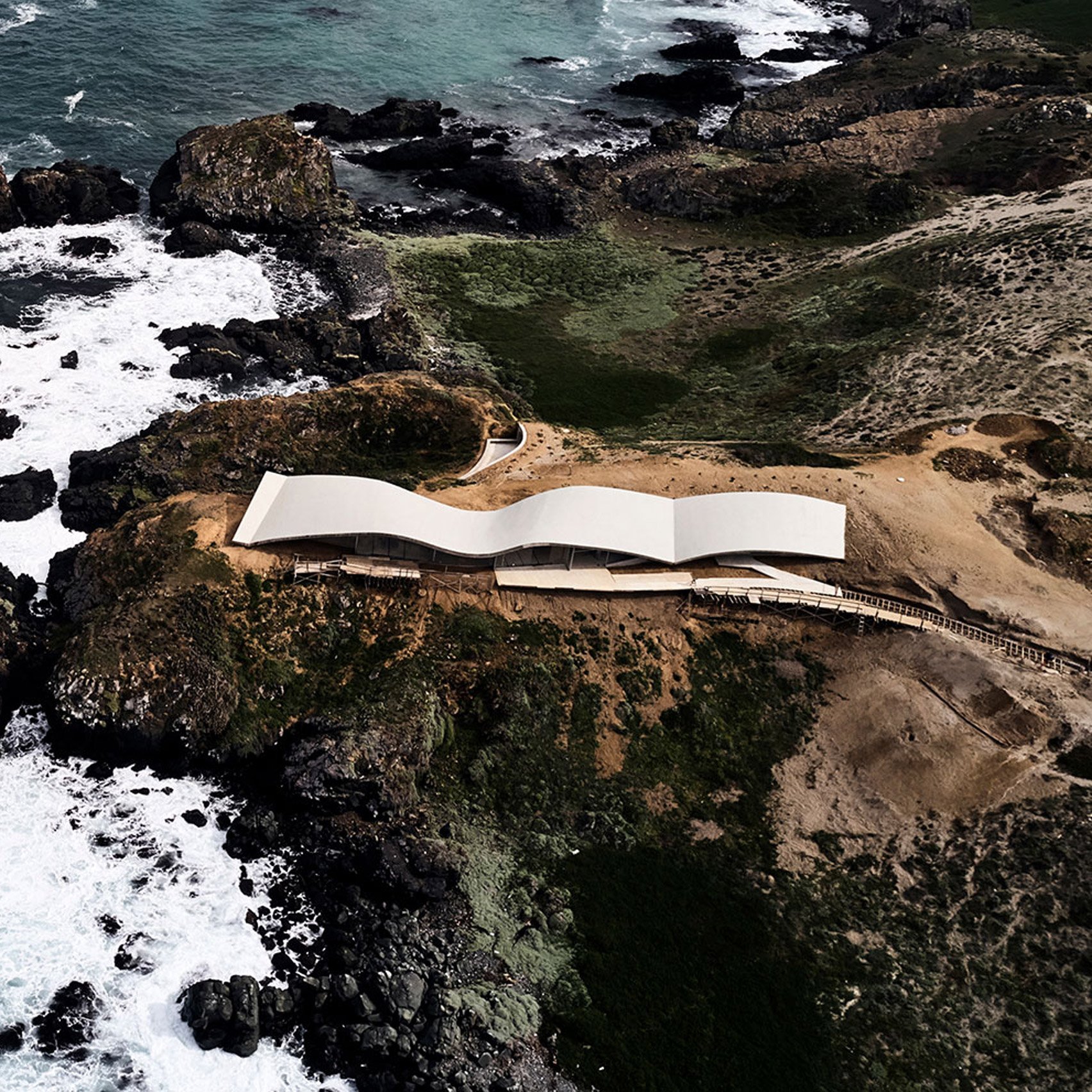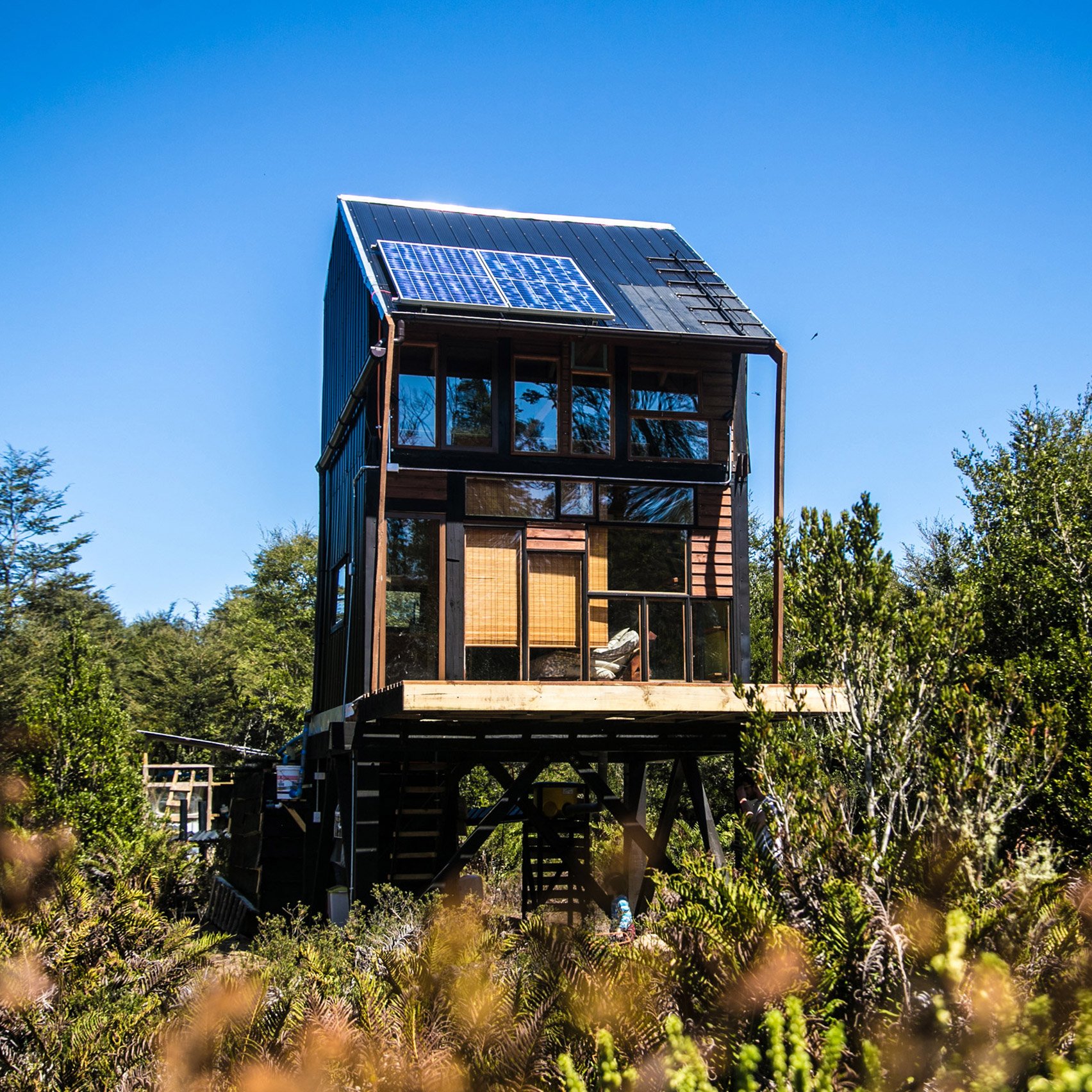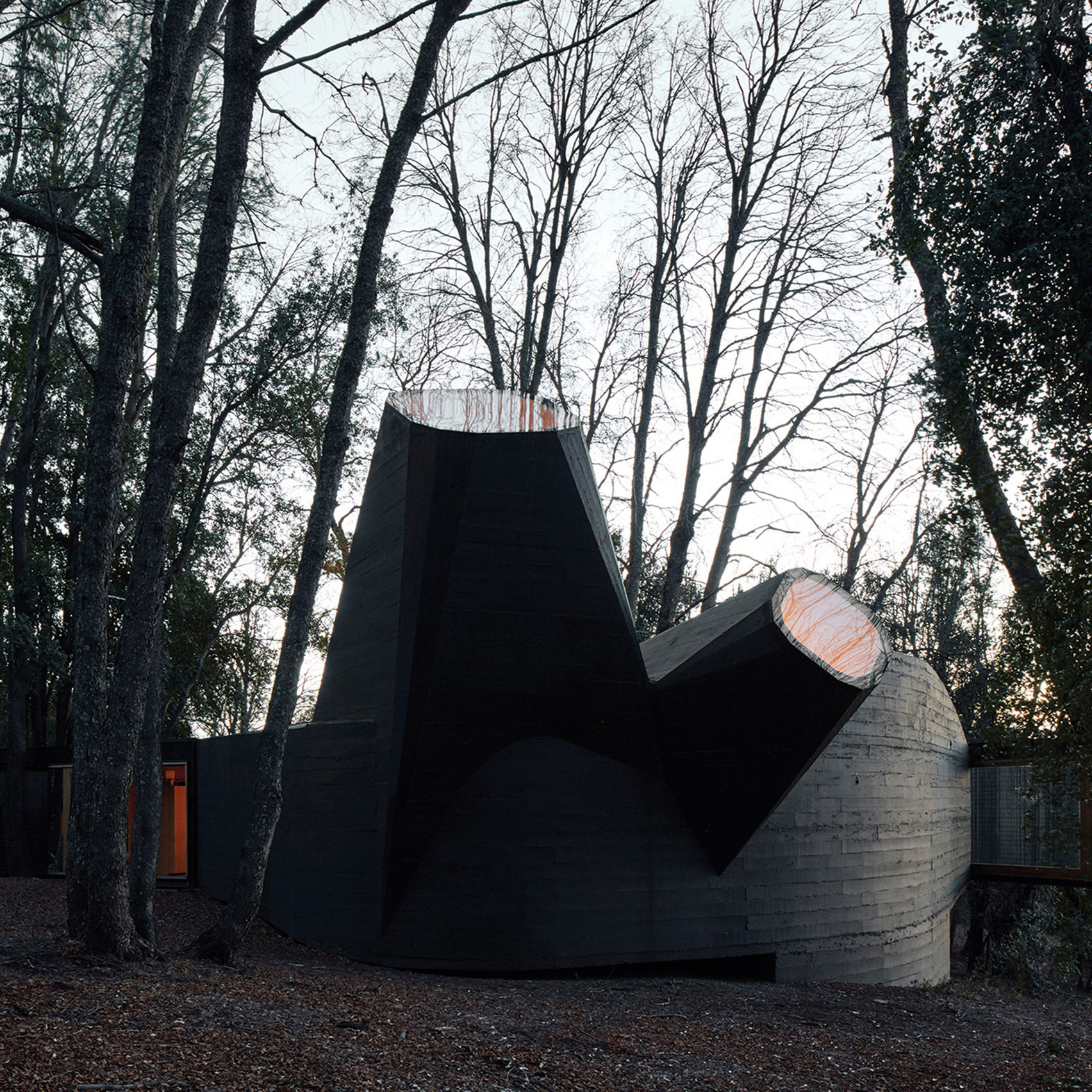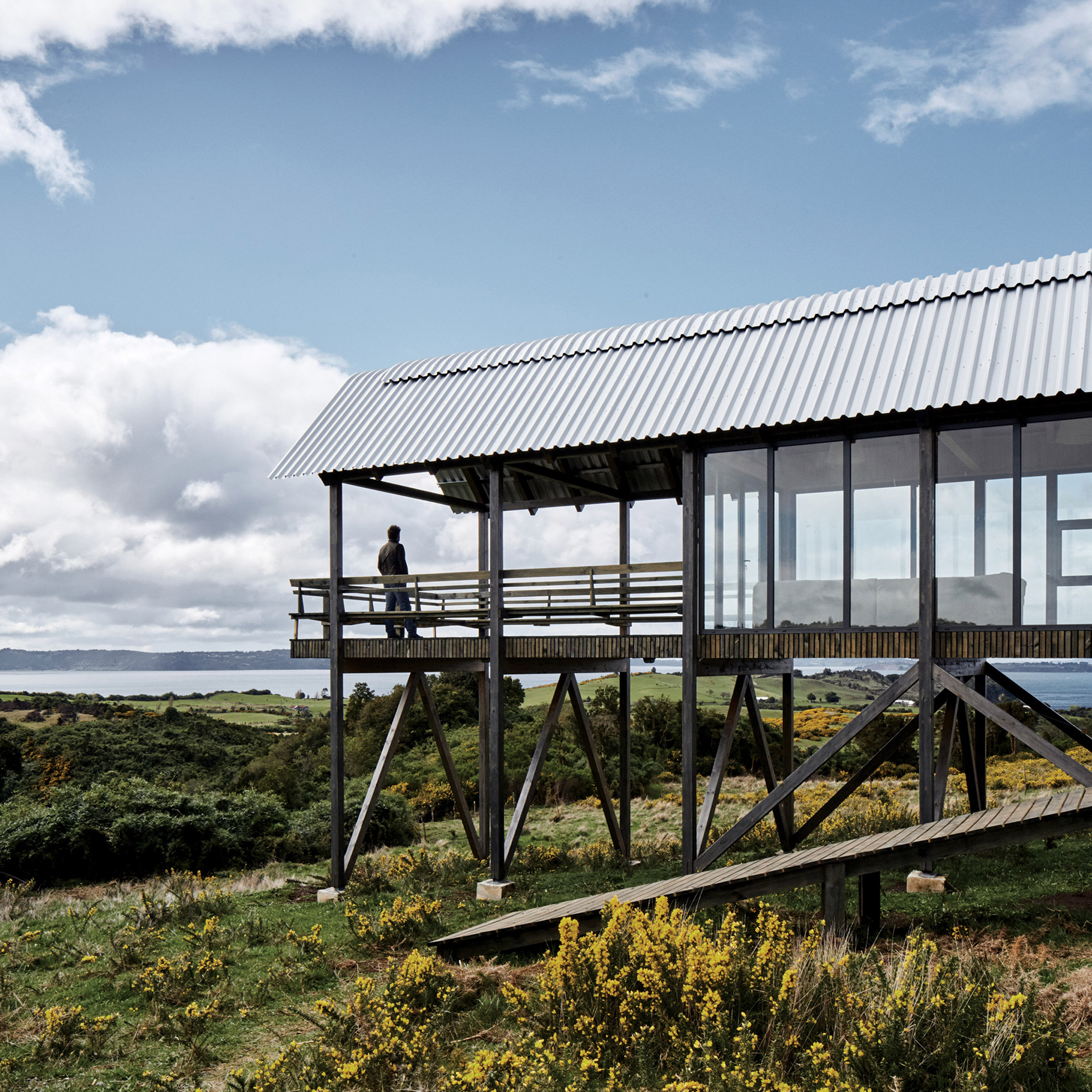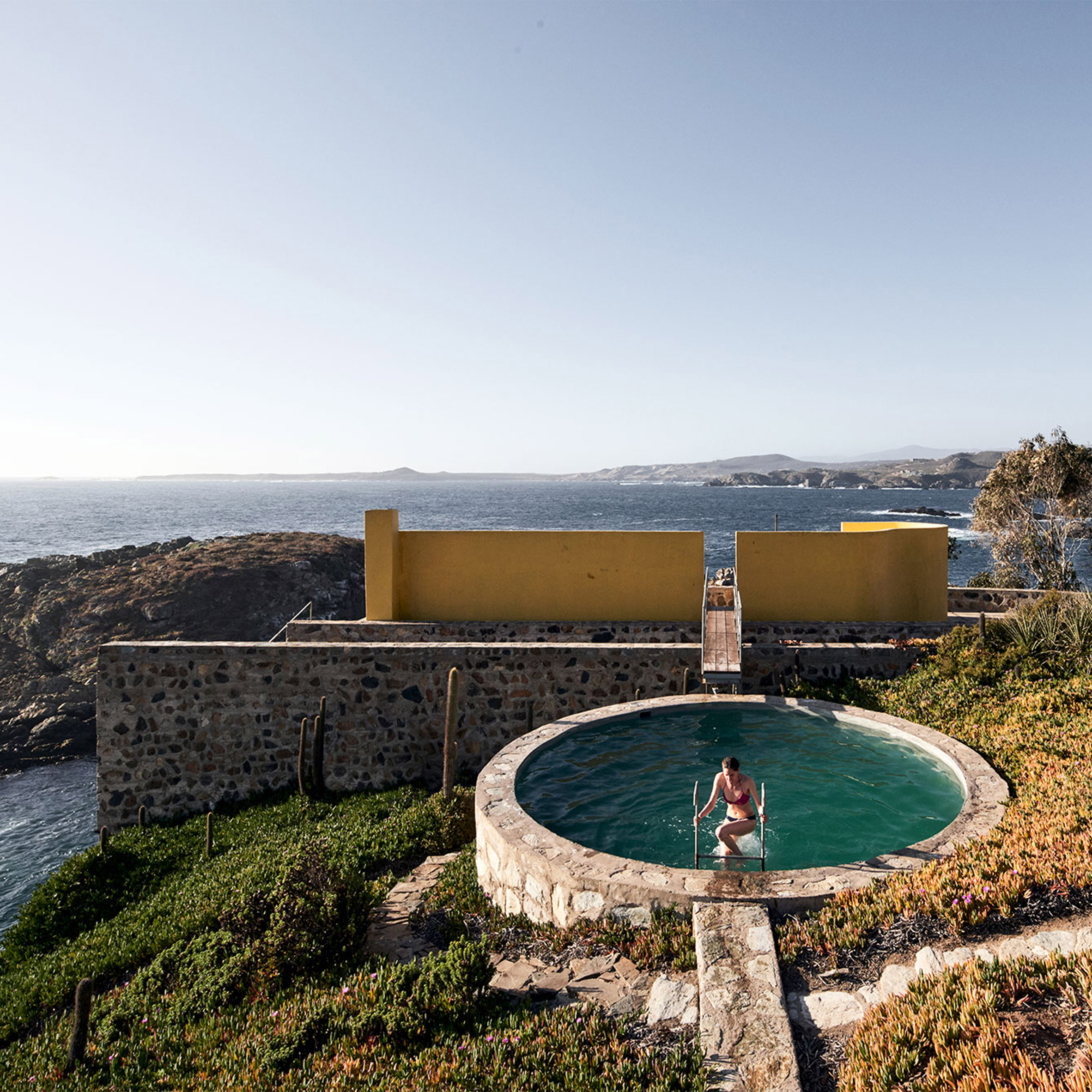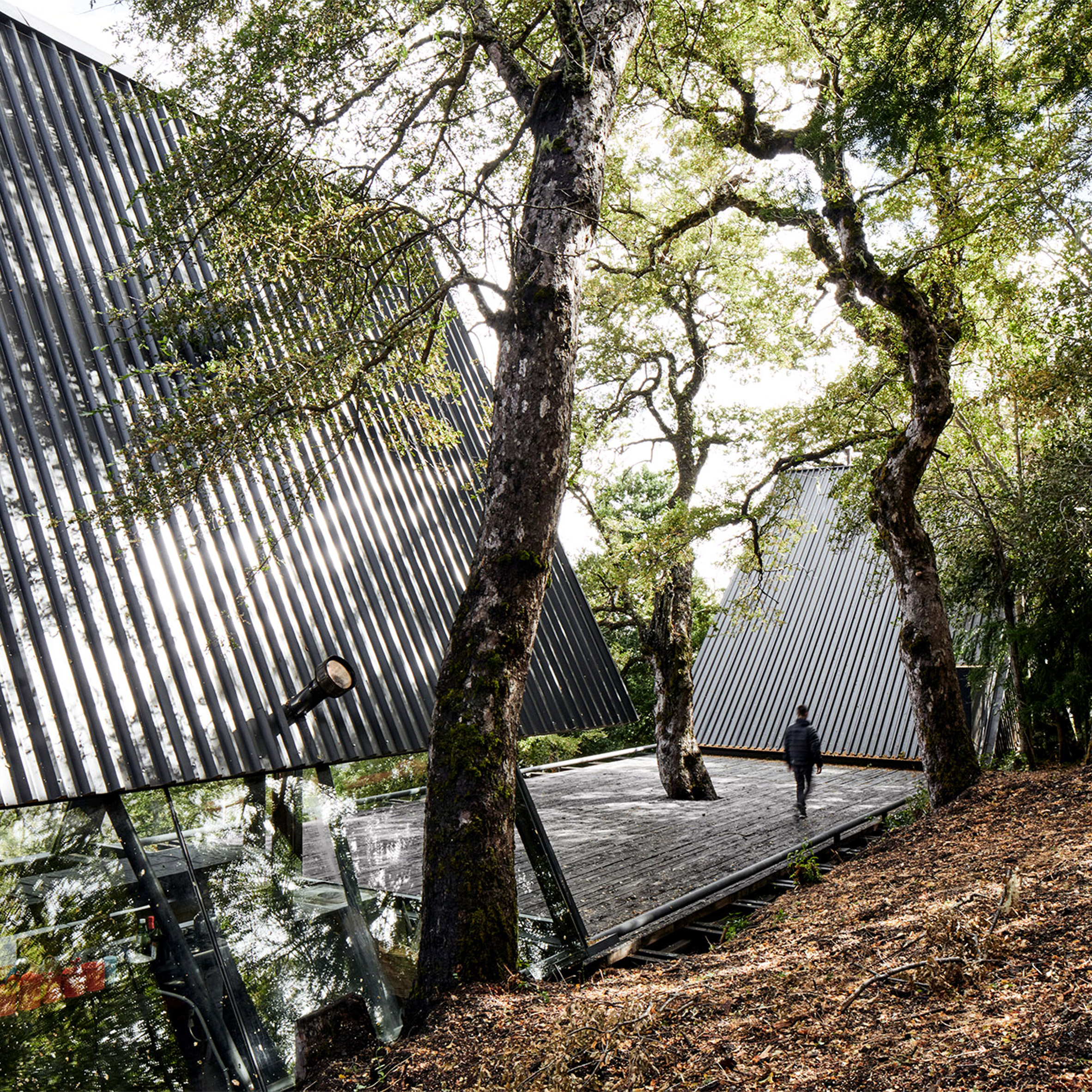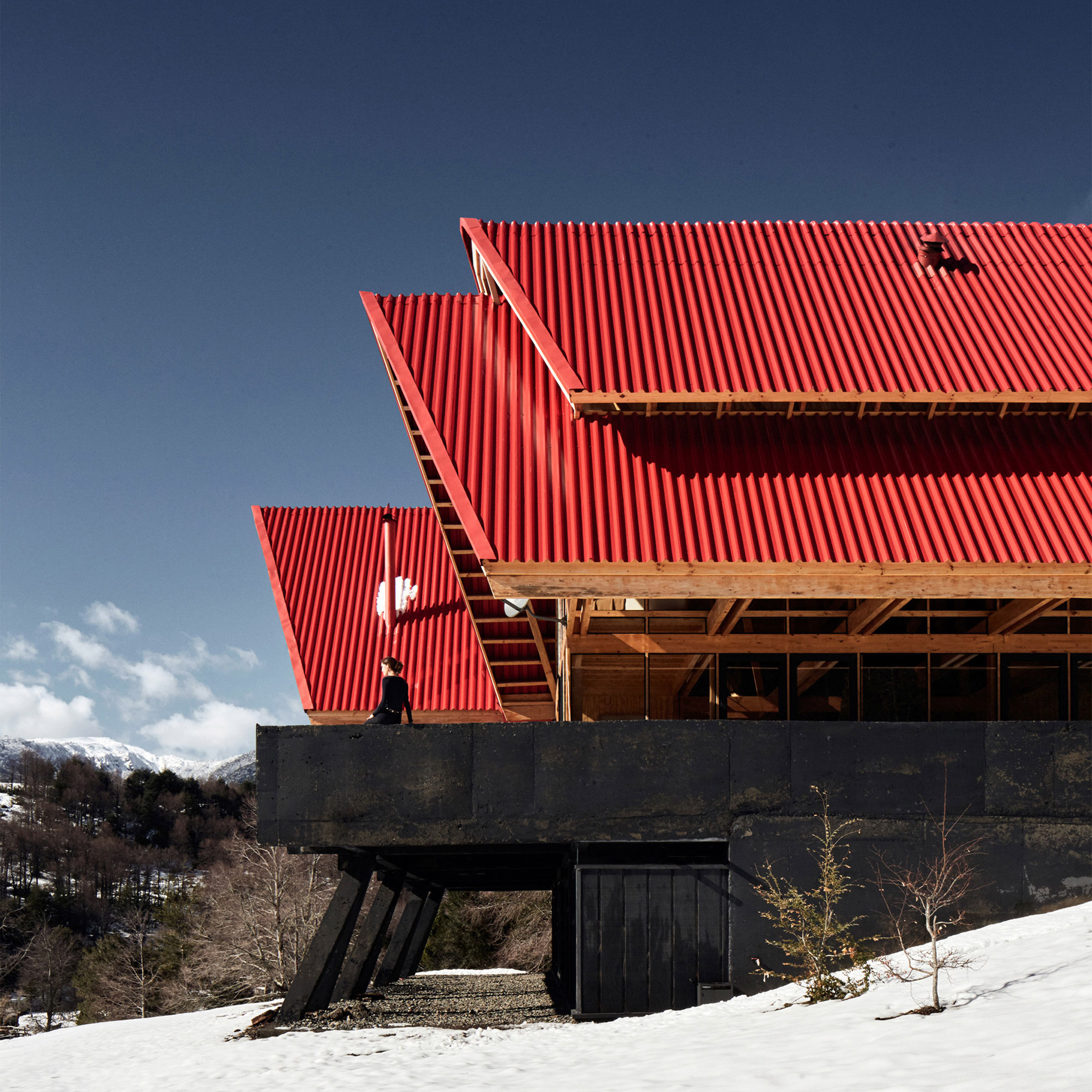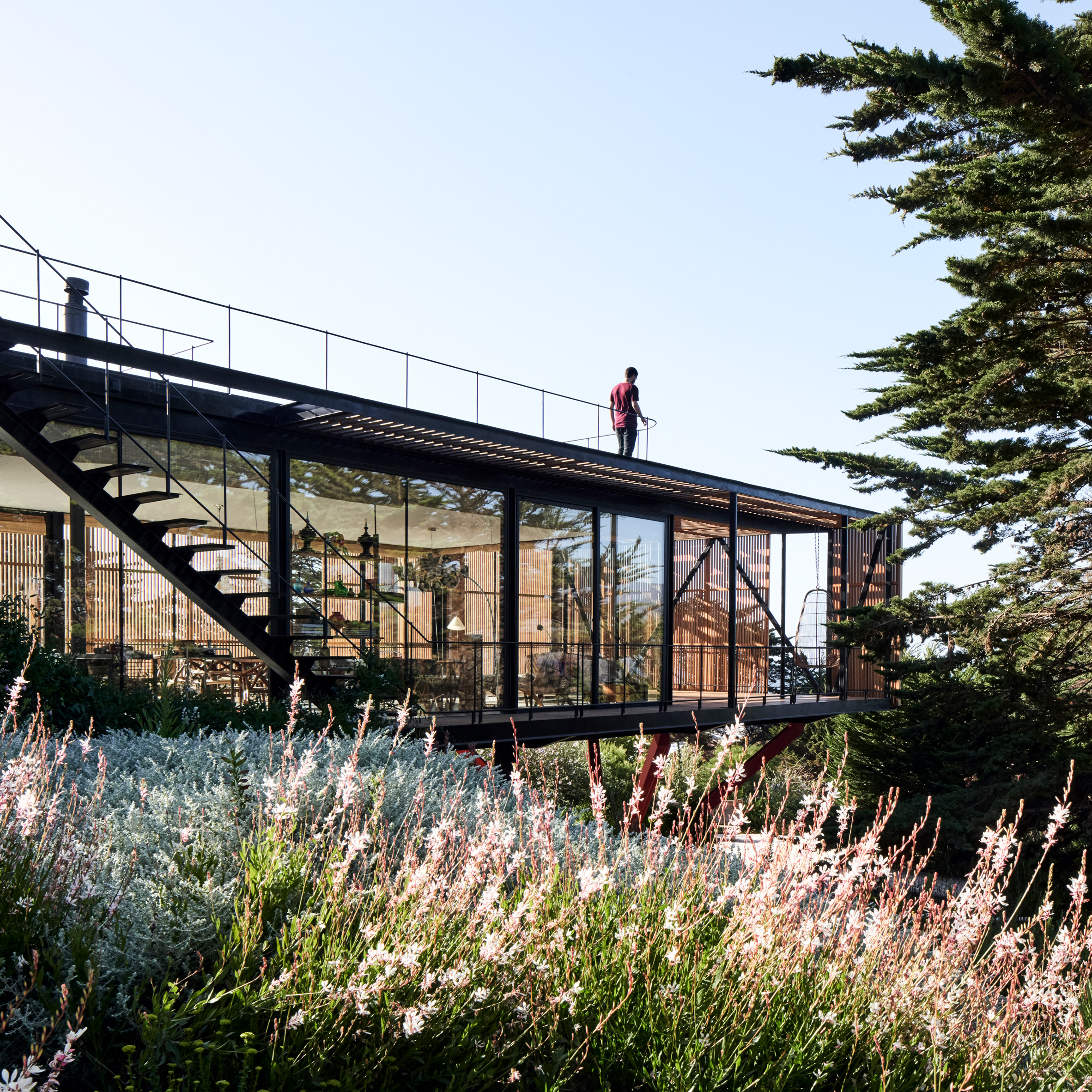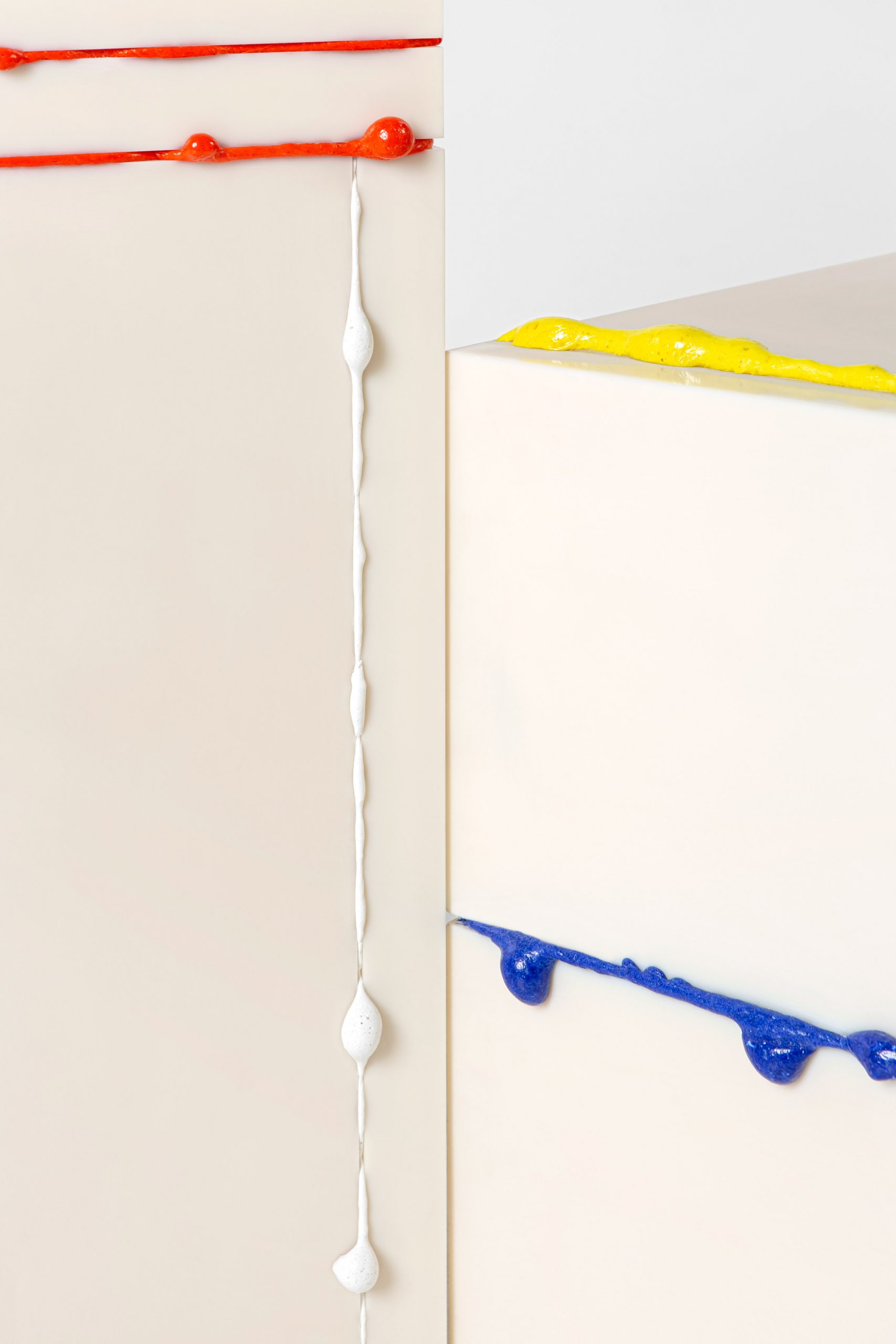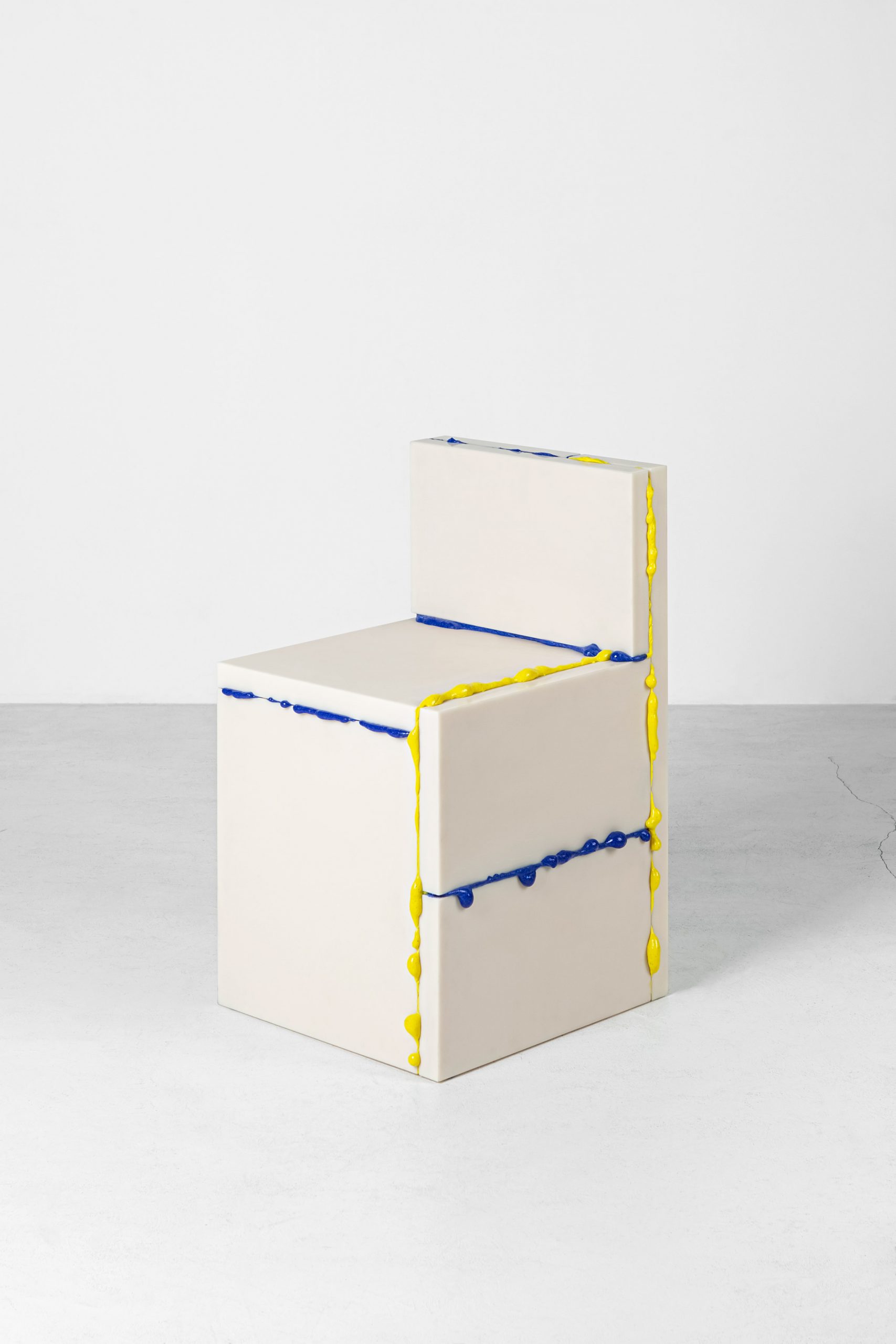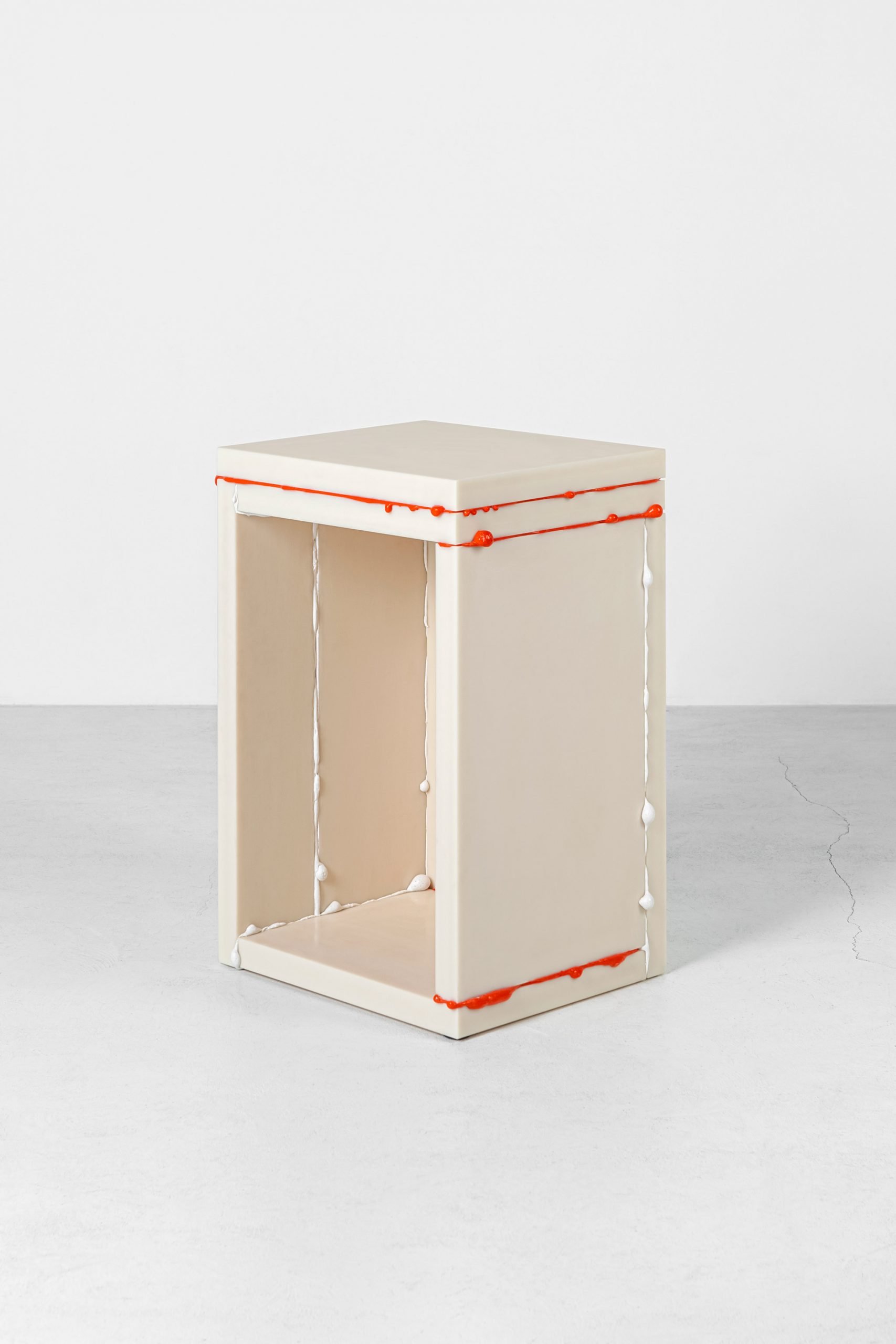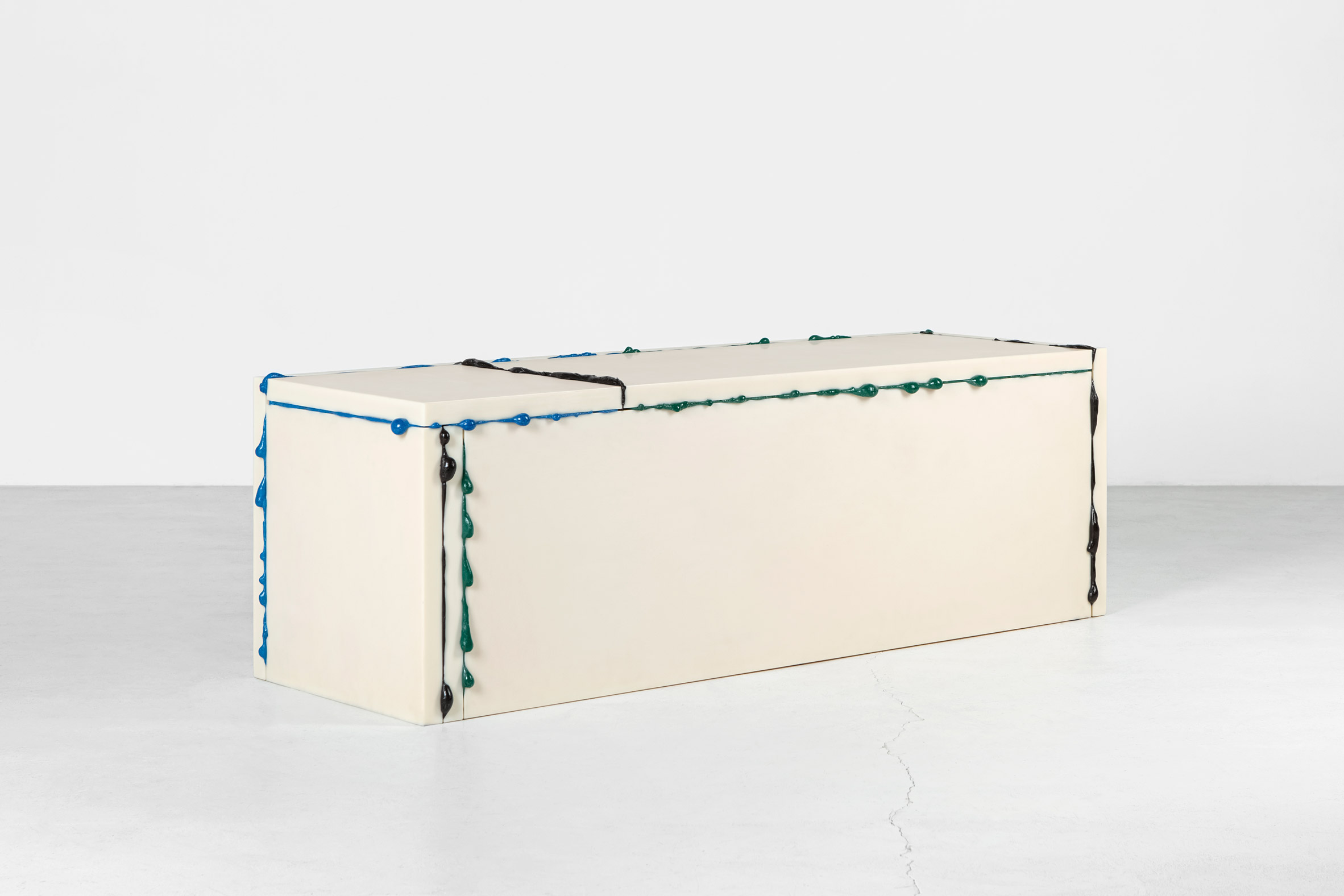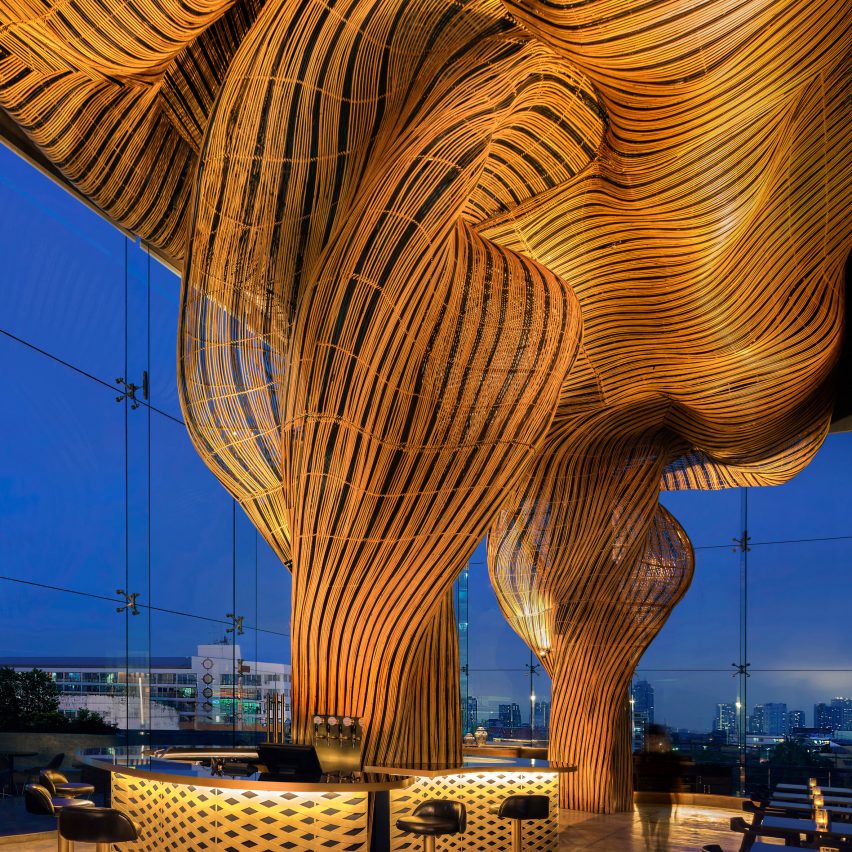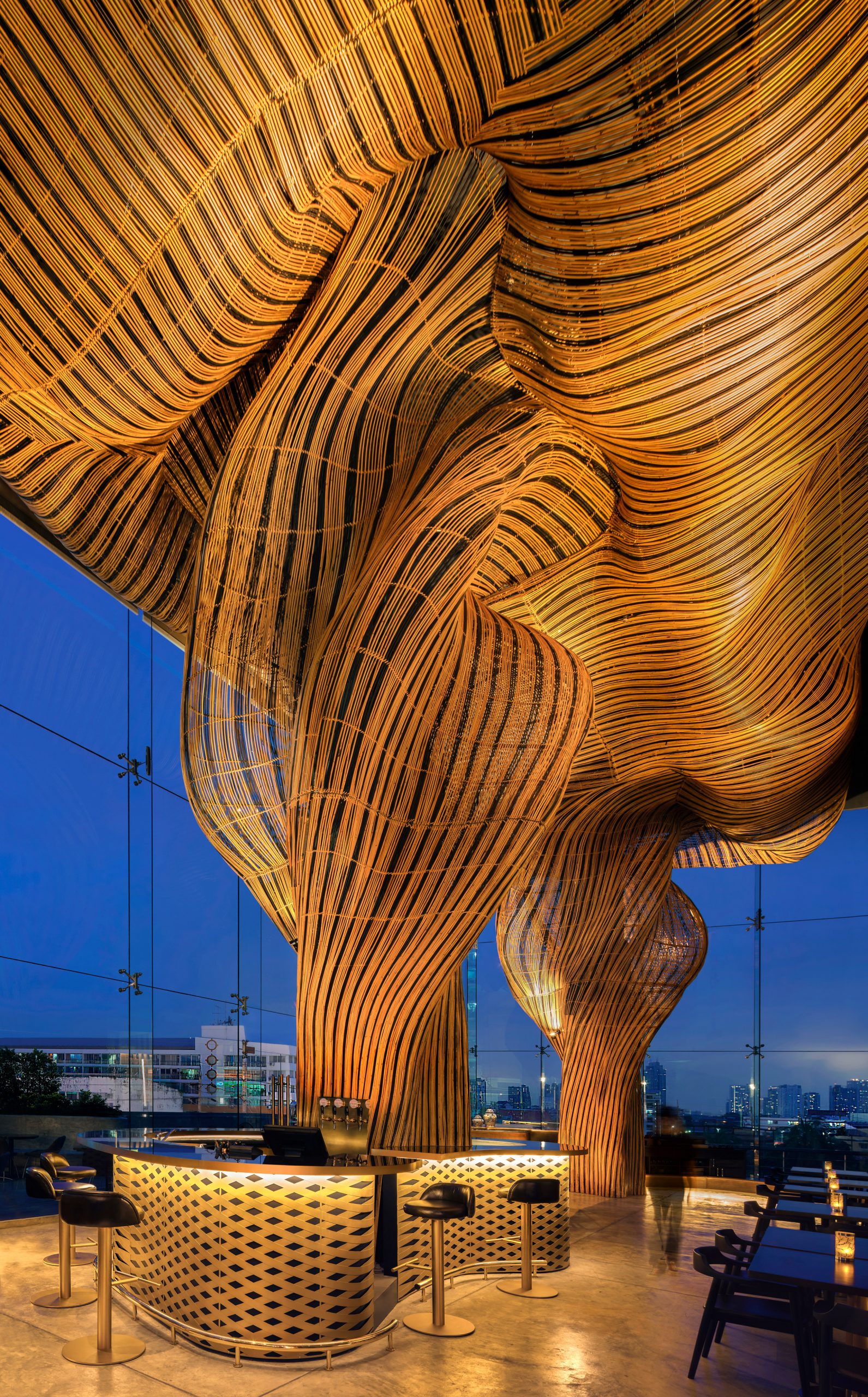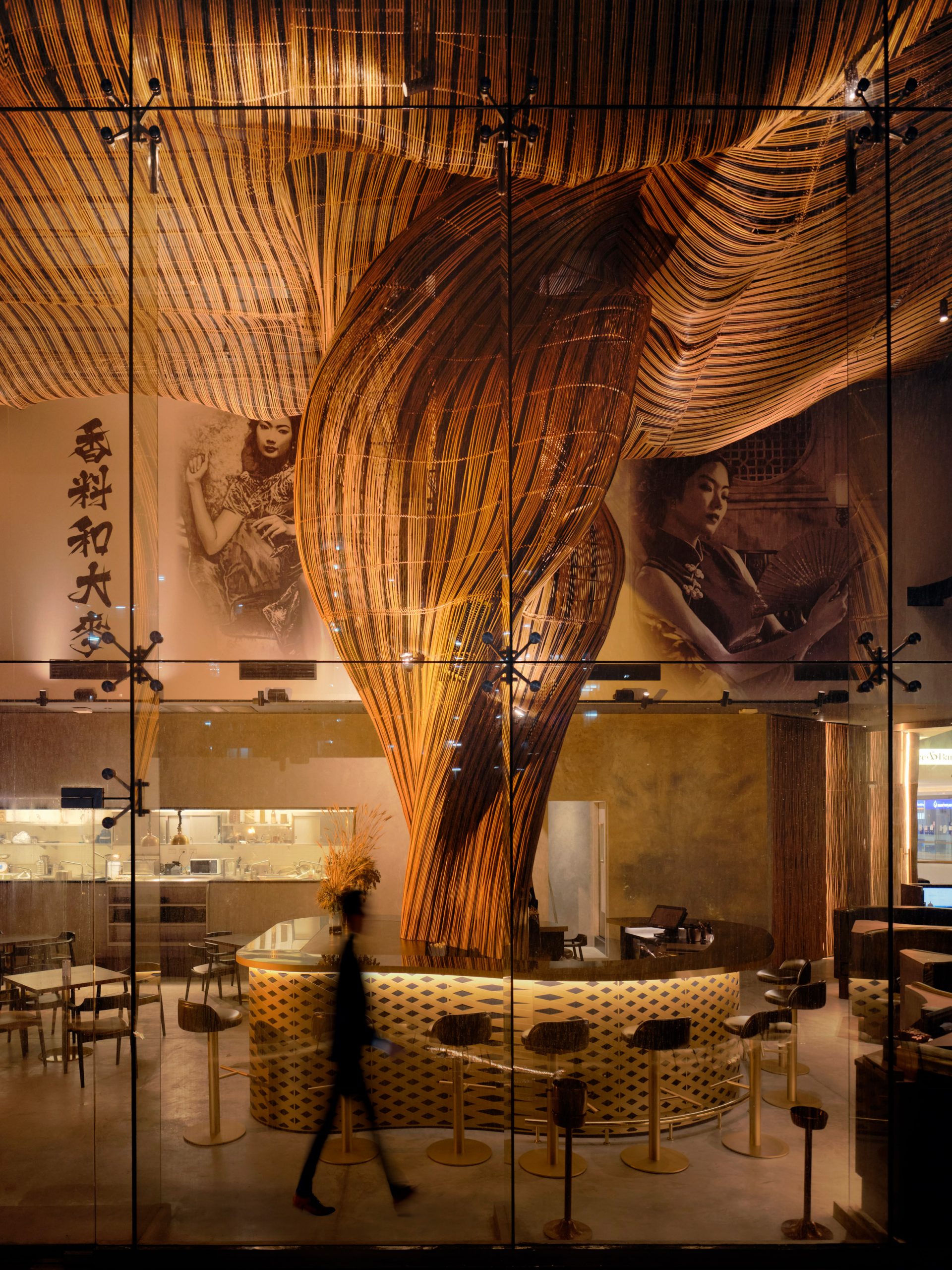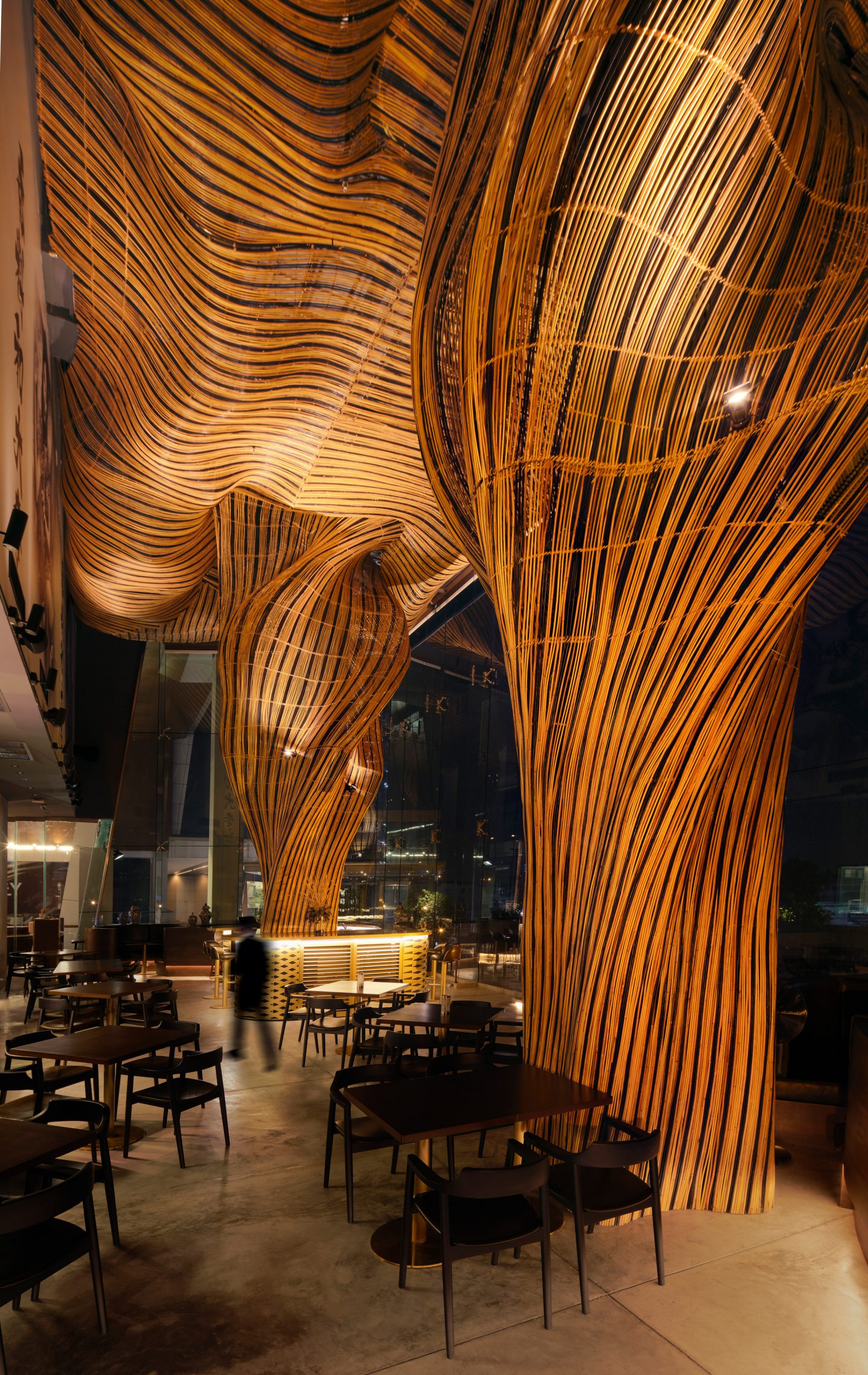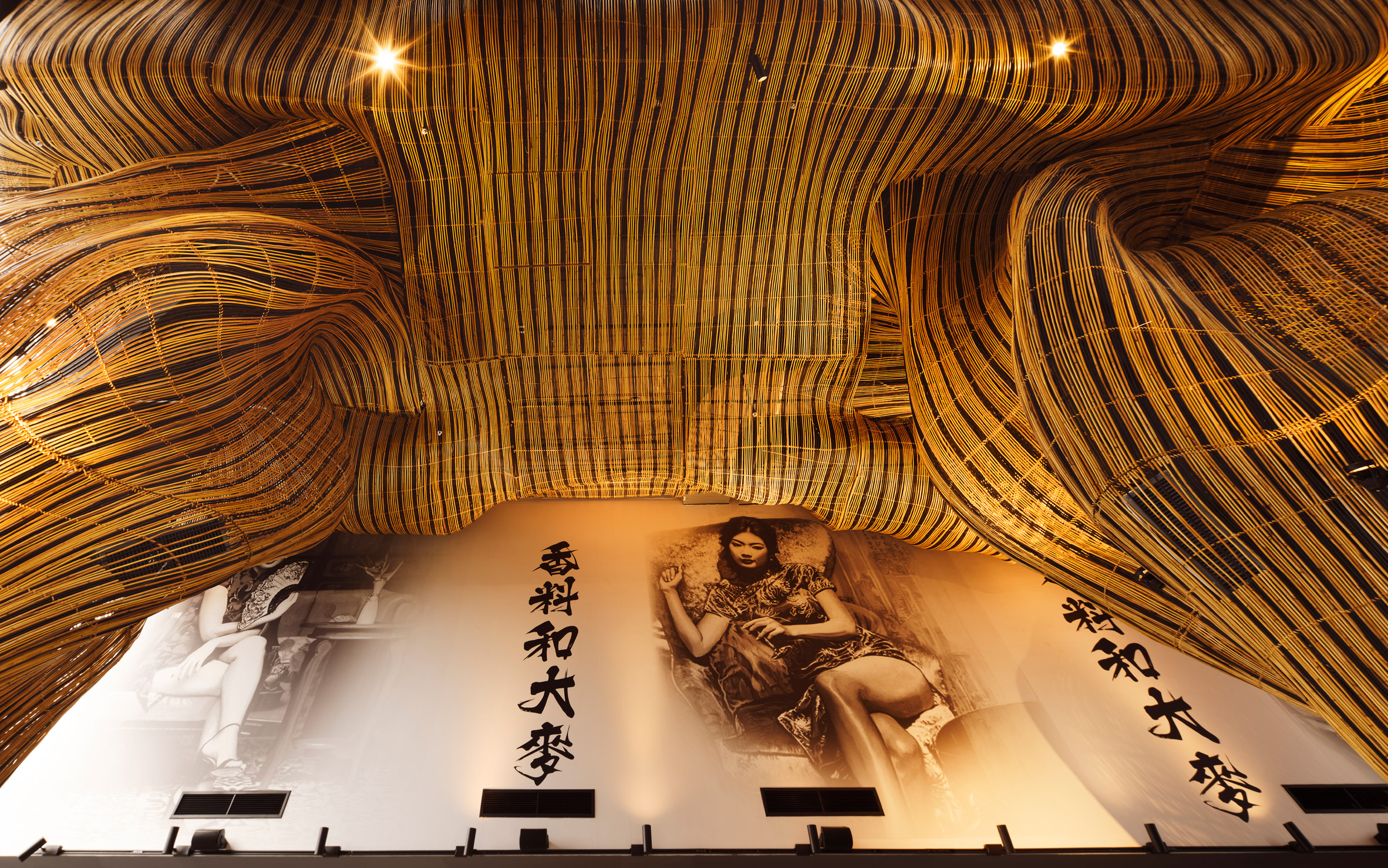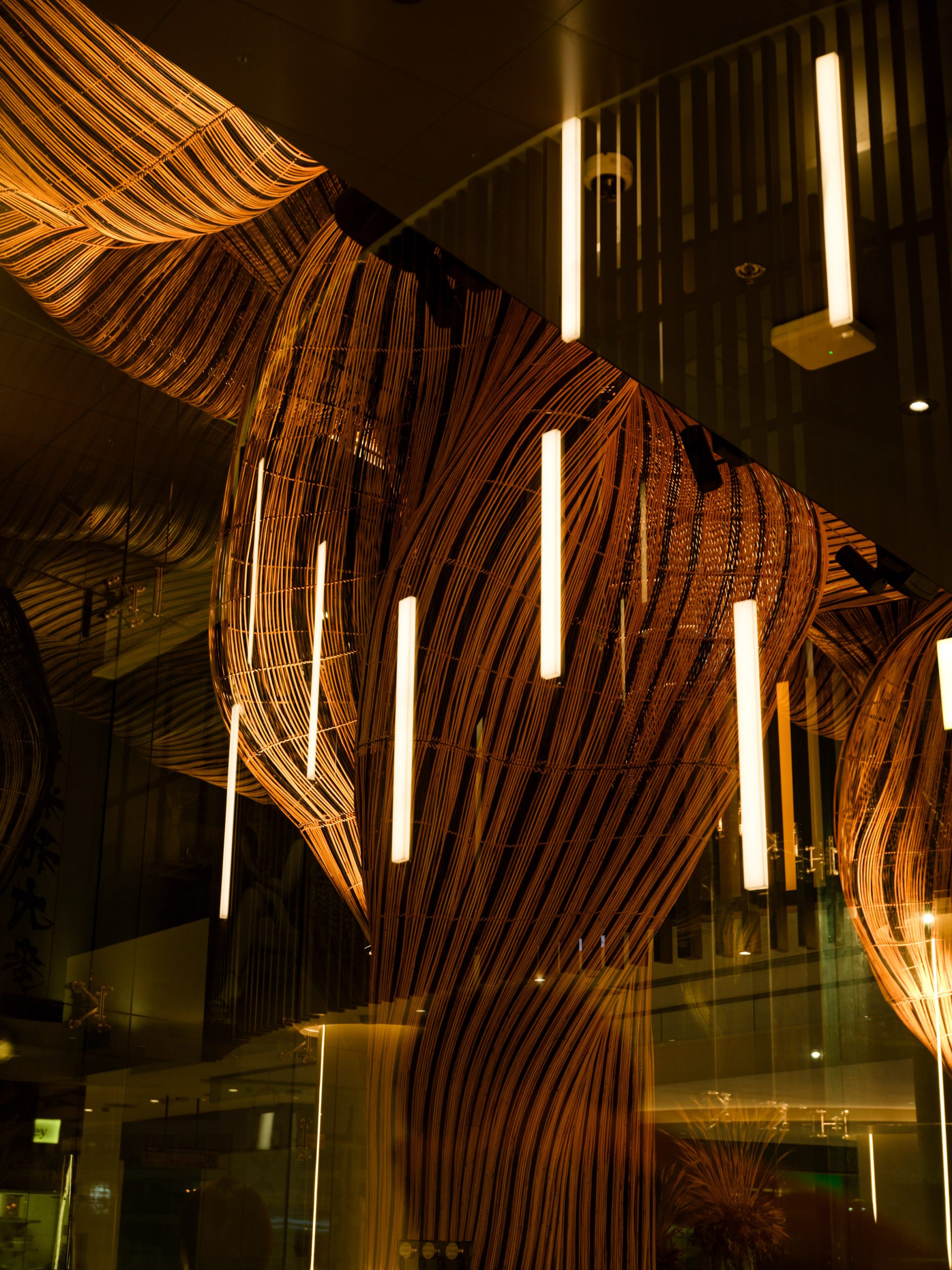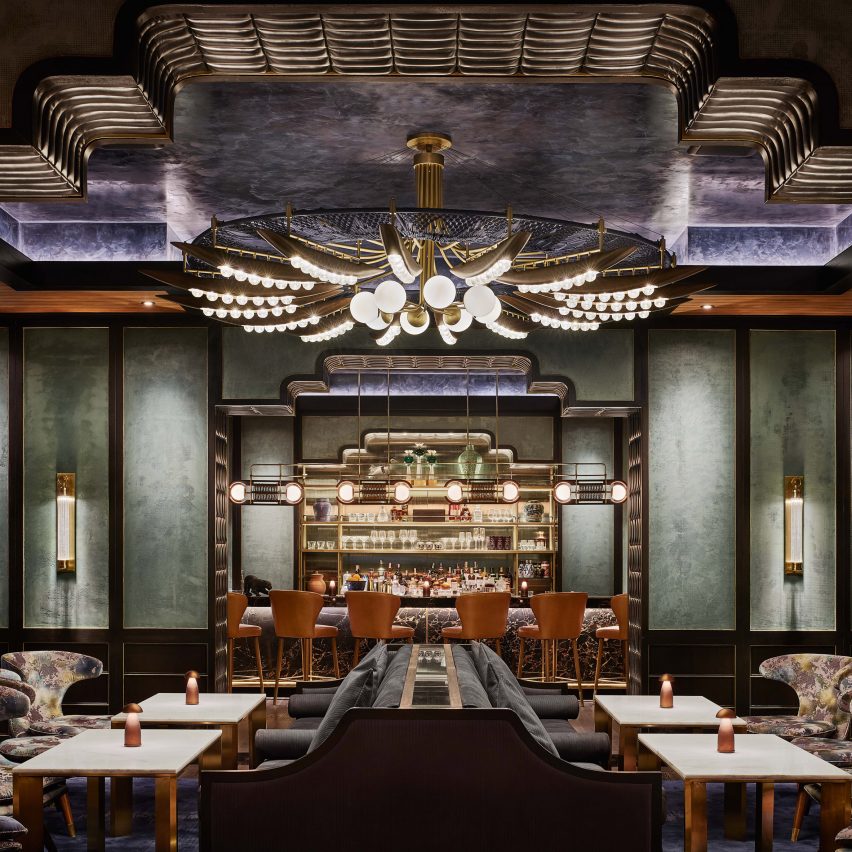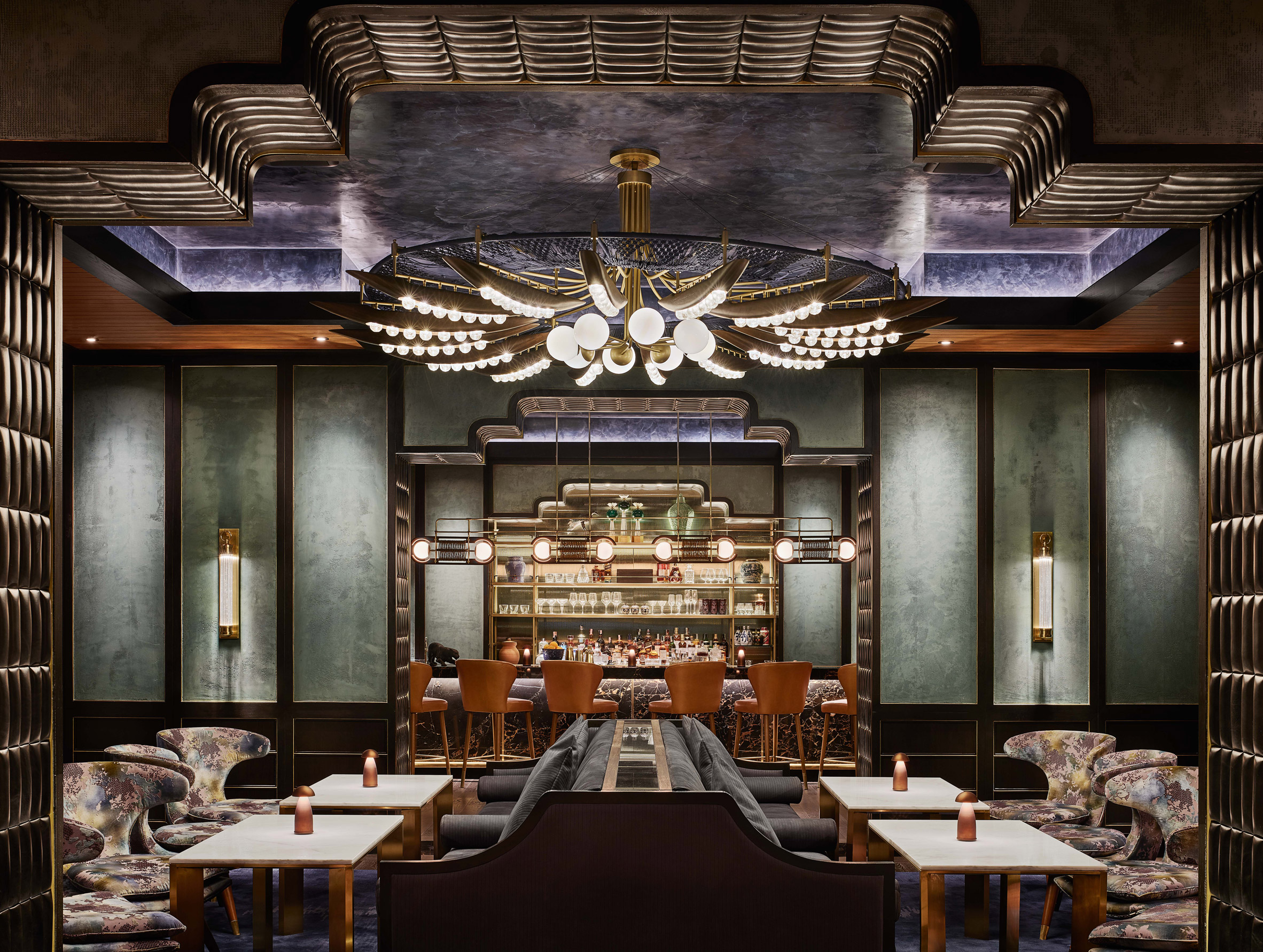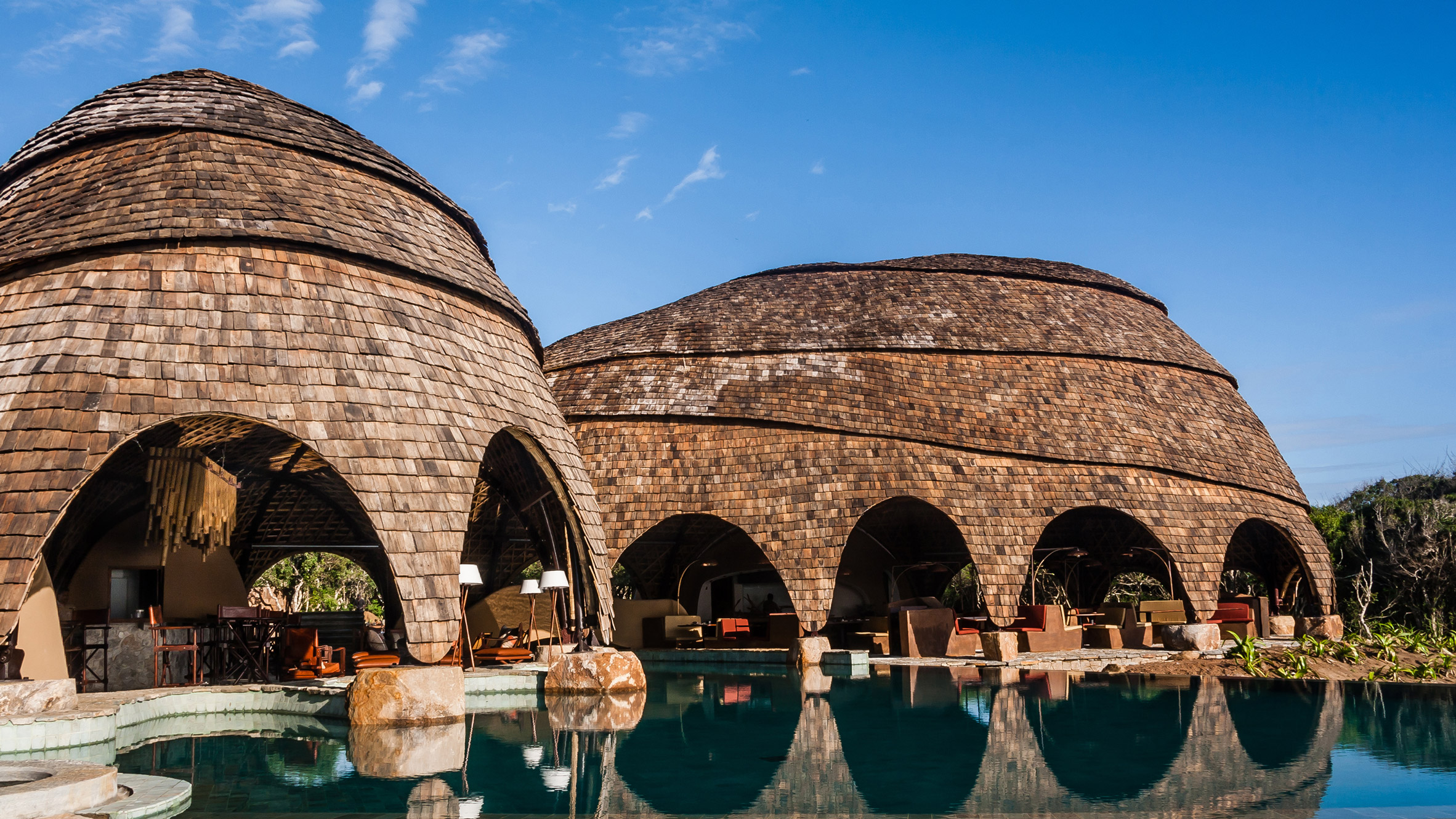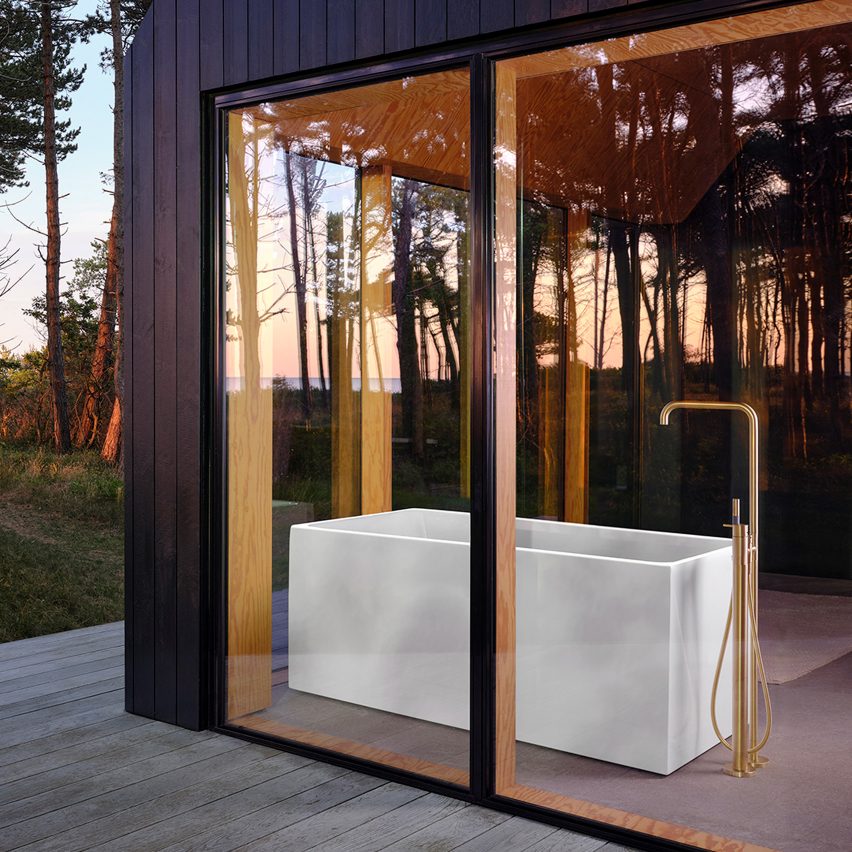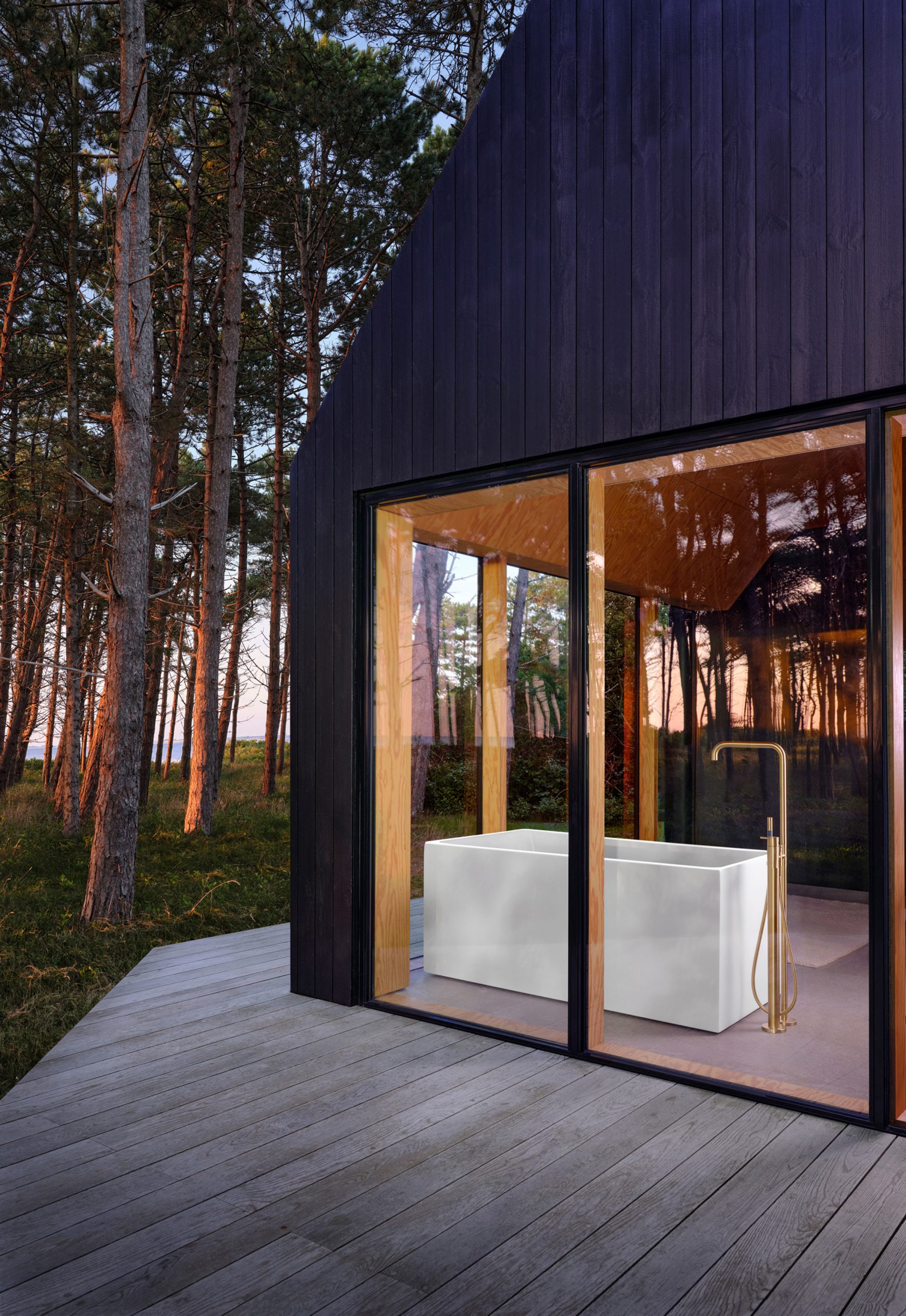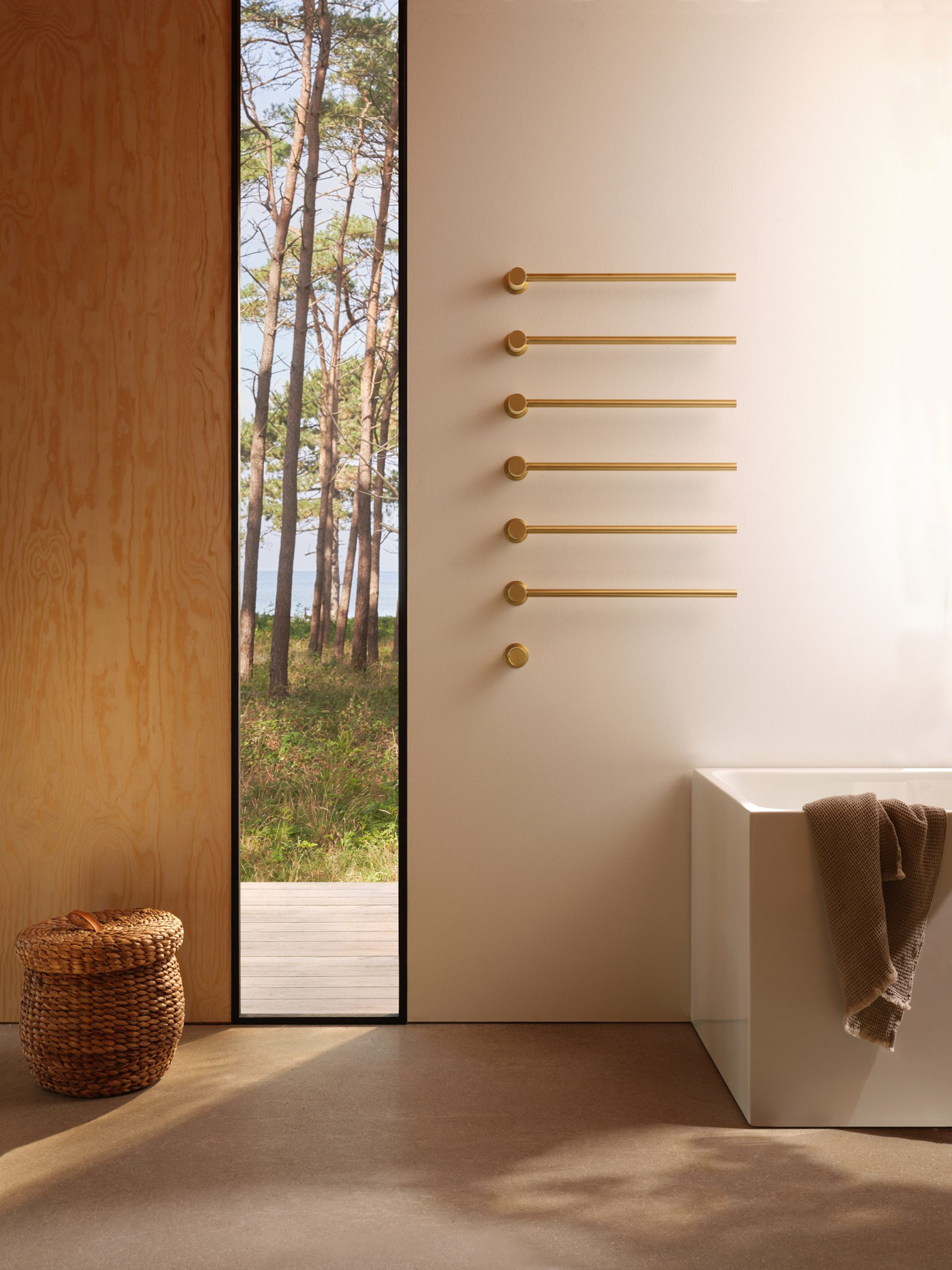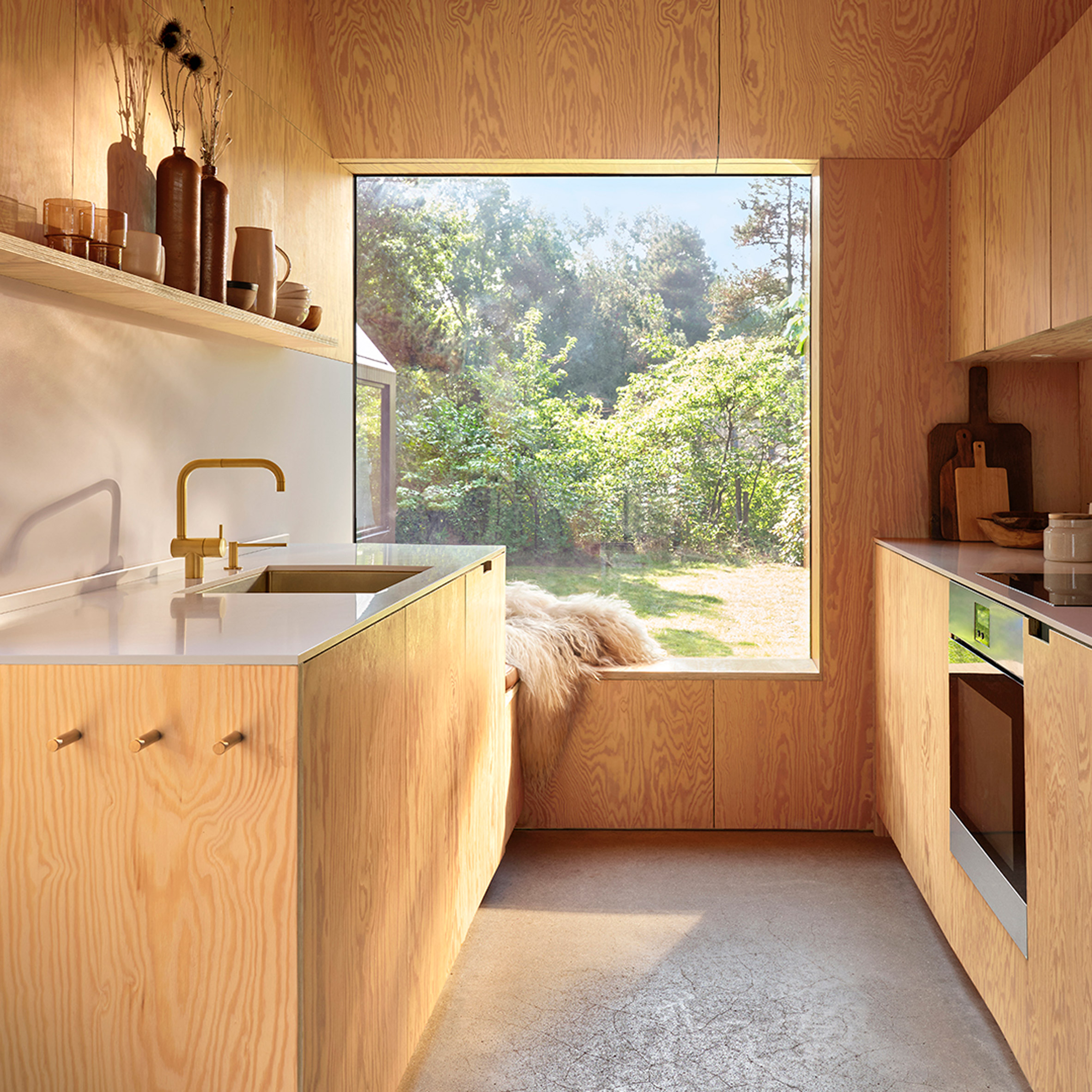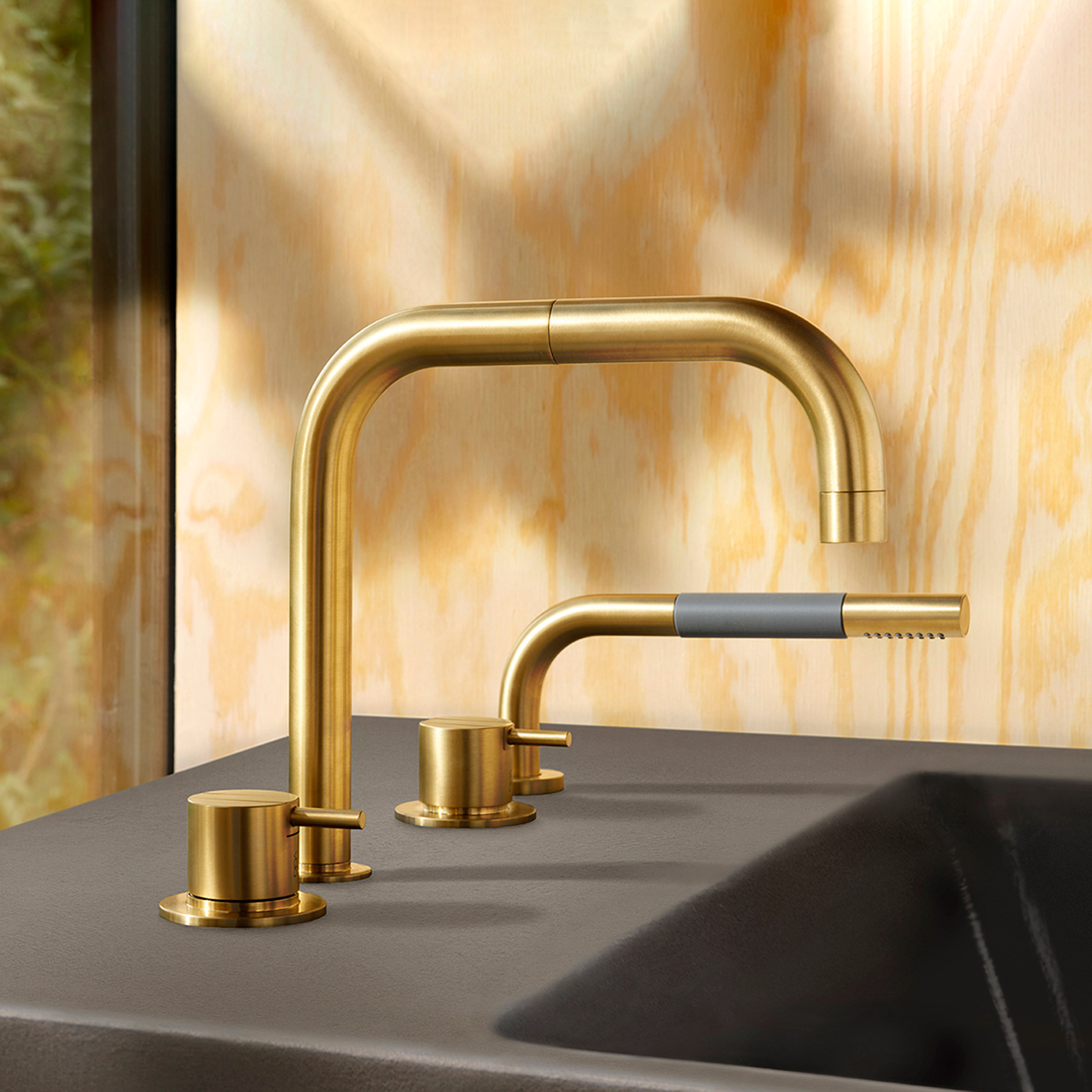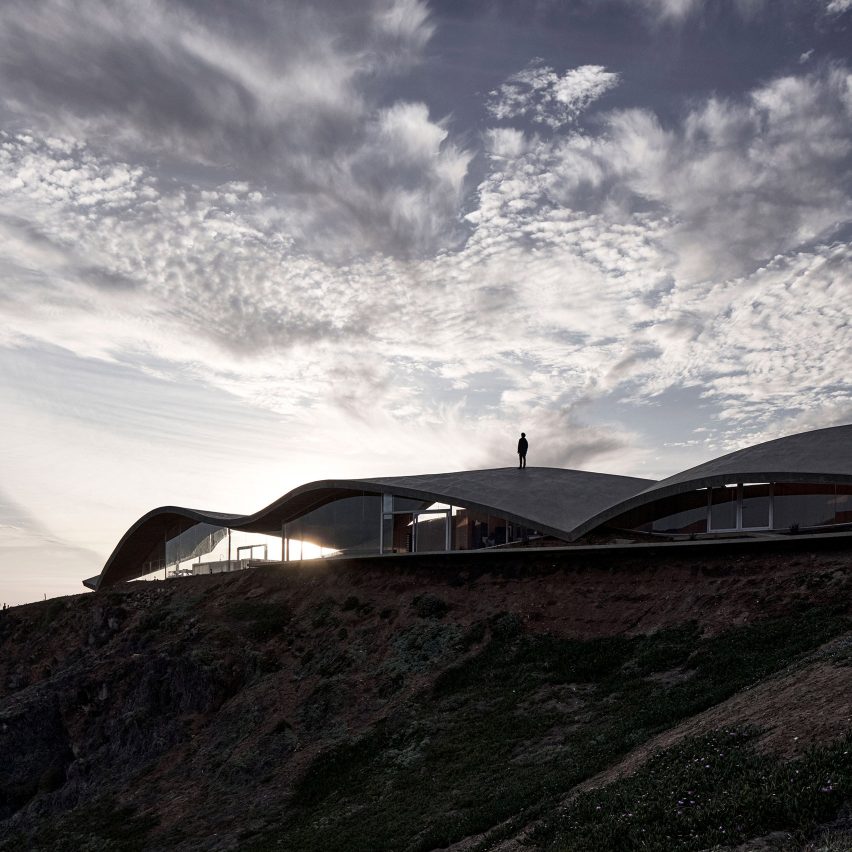
Some of the year's most varied houses, including homes with undulating concrete roofs, bright yellow windbreakers and wonky skylights, were in Chile. US editor Eleanor Gibson's selects of the best Chilean houses to continue our review of 2020.
House in Los Vilos by Office of Ryue Nishizawa
Tokyo firm Office of Ryue Nishizawa created this home on a promontory towards the Pacific Ocean, topping it with a wave-shaped roof to follow the contours of the site.
Resting on glass walls that offer expansive views of the surroundings, the monolithic roof segments the areas inside the long house. This includes a sauna, a bedroom and living room, and a kitchen and dining room adjoining a terrace at the rear.
Find out more about House in Los Vilos ›
Completed by a team of six, none of whom have architectural training, the wooden ZeroCabin is designed to operate off-grid.
Water needs are met by rainwater that is collected and treated on site, energy requirements are met by photovoltaic panels and heat is provided by sunlight and a stove.
Find out more about ZeroCabin ›
Poem of the Right Angle by Smiljan Radić
Located in woodland in Vilches, the black Poem of the Right Angle house has an unusual shape based on forms architect Smiljan Radić found in an abstract poem by Le Corbusier dezeen.
There are three huge rooflights that extend at odd angles to create lightwells inside the property, curved walls that meet harsh right angles, and a cantilever.
Find out more about Poem of the Right Angle ›
Casa Aguantao by Guillermo Acuña Arquitectos Asociados
Santiago studio Guillermo Acuña Arquitectos Asociados offset two shed-like volumes to create Casa Aguantao on the Peninsula de Rilán.
Gabled, corrugated-metal roofs extend over glass walls elevated on pine-wood stilts – a weathered wood ramp provides access to the house.
Find out more about Casa Aguantao ›
Los Vilos House by Cristián Boza
A winding yellow-painted wall protects the rooftop of the cliffside Los Vilos House from harsh wind. A bridge from the rooftop leads to a circular swimming pool.
Completed in 1997 by late architect Cristián Boza as his weekend retreat, the house was recently photographed by Cristobal Palma.
Find out more about Los Vilos House ›
Prism House + Terrace Room by Smiljan Radić
Architect Radić completed Prism House + Terrace Room on a sloped terrain near to Conguillío National Park.
Raised on stilts, the house is split into two gabled volumes by a wooden deck that is pierced by a huge tree.
Find out more about Prism House + Terrace Room ›
Casa Malalcahuello by Guillermo Acuña Arquitectos Asociados
Both wings of Casa Malalcahuello have two bright-red metal pitched roofs with a smaller one laid on top of the larger one to create extra height in the interior of the house.
The remaining wooden structure of the house was CNC cut, a process Guillermo Acuña Arquitectos Asociados said offered more control in the materials used, and reduced construction cost and time.
Find out more about Casa Malalcahuello ›
Engawa House by Santiago Valdivieso and Stefano Rolla
Architects Santiago Valdivieso and Stefano Rolla have created an external walkway and glazed living space behind slatted walls made from the Chilean wood Raulí.
The walkway between the glazed structure and slatted wood gives the house its name, Engawa, which is the wooden edging strip typically found in Japanese architecture.
Find out more about Engawa House ›
The post Dezeen's top eight Chilean houses of 2020 appeared first on Dezeen.
from Dezeen https://ift.tt/372mQAM
